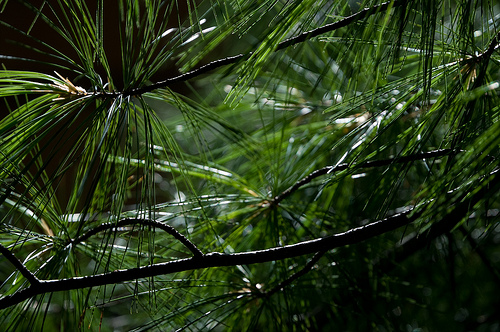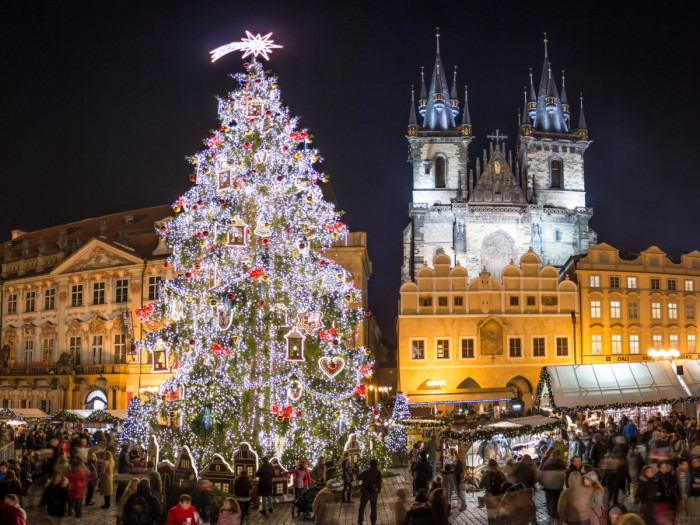Long before pine trees were adopted, evergreen boughs were hung on doors and windows at Christmas. In many countries, evergreens were believed to ward off witches, ghosts, evil spirits, and illness.
The first Christmas tree in Germany
Germany is credited with starting the tradition of decorating Christmas trees. In the 16th century, German Christians brought decorated trees into their homes. Some who could not afford them built wooden Christmas pyramids and decorated them with evergreens. It is said that Martin Luther, a 16th-century Protestant reformer, first placed lighted candles under a tree. As he walked home one winter evening, he was amazed by the brilliance of the stars twinkling among the evergreens. To recreate this beautiful sight, Luther set up a tree in his main room and stuck lighted candles into its branches.
Who brought the Christmas tree to America?
Most 19th-century Americans found Christmas trees to be an oddity. The first display of Christmas trees was in the 1830s by German settlers in Pennsylvania, although Christmas trees were already a tradition in many German homes. German settlements in Pennsylvania had community trees as early as 1747. However, by the late 1840s, Christmas trees were considered a pagan symbol and were not accepted by most Americans.
Not surprisingly, like many other Christmas customs, the pine tree was a late adopter in America. For the Puritans of New England, Christmas was sacred and they were very strict about decorating trees at Christmas. That strict formality continued into the 19th century, when the influx of German and Irish immigrants undermined Puritanism.
In 1846, a picture of Queen Victoria and her family was published in the Illustrated London News, standing with her children around a Christmas tree. Unlike previous royals, Victoria was very popular with her subjects, and the picture immediately became fashionable. Christmas trees were already popular at this time.
In the 1890s, Christmas decorations arrived from Germany and the popularity of Christmas trees increased across America. Europeans were seen using small, medium-sized trees, while Americans preferred their Christmas trees to be floor-to-ceiling.
In the early 20th century, Americans decorated their trees mainly with homemade ornaments, while German Americans continued to use apples, nuts, and marzipan. People began to decorate their trees with string lights, allowing them to glow for days on end. As a result, Christmas trees began to appear in town squares across the country, and having a Christmas tree in the home became a tradition in many countries around the world .
Source




![[Photo] 12th grade students say goodbye at the closing ceremony, preparing to embark on a new journey](https://vphoto.vietnam.vn/thumb/1200x675/vietnam/resource/IMAGE/2025/5/28/42ac3d300d214e7b8db4a03feeed3f6a)

![[Photo] Prime Minister Pham Minh Chinh receives a bipartisan delegation of US House of Representatives](https://vphoto.vietnam.vn/thumb/1200x675/vietnam/resource/IMAGE/2025/5/28/468e61546b664d3f98dc75f6a3c2c880)
![[Photo] Vietnamese and Hungarian leaders attend the opening of the exhibition by photographer Bozoky Dezso](https://vphoto.vietnam.vn/thumb/1200x675/vietnam/resource/IMAGE/2025/5/28/b478be84f13042aebc74e077c4756e4b)
![[Photo] General Secretary To Lam works with the Central Policy and Strategy Committee](https://vphoto.vietnam.vn/thumb/1200x675/vietnam/resource/IMAGE/2025/5/28/7b31a656d8a148d4b7e7ca66463a6894)



















































































Comment (0)